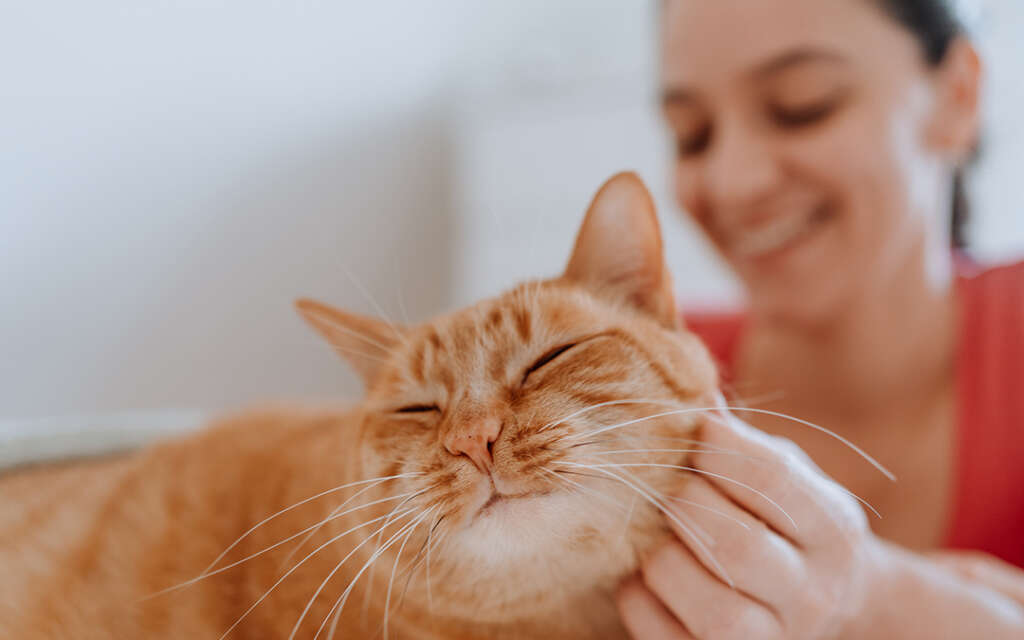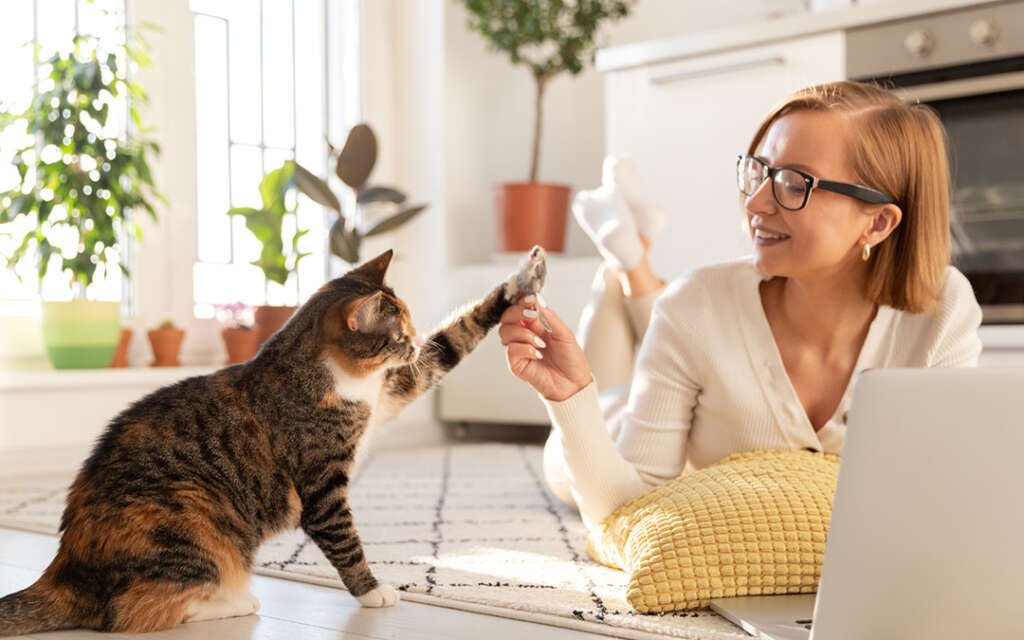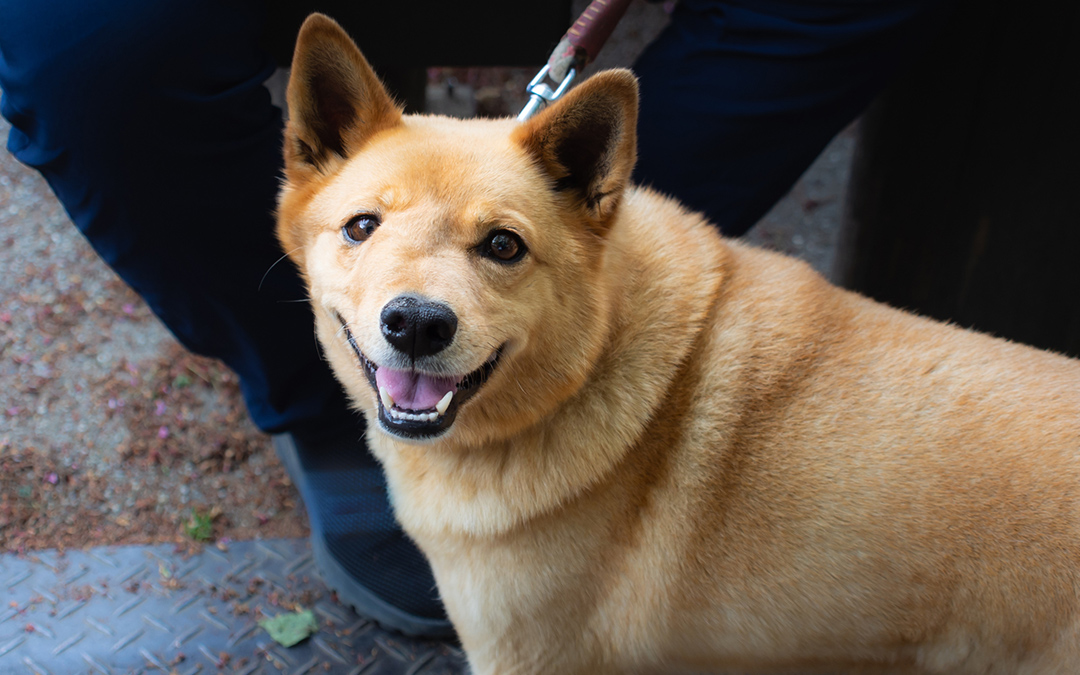If you’re a cat parent with an unspayed female cat, you may notice certain changes in her behavior from time to time. Is she suddenly extra affectionate, more vocal than usual, or trying to escape out the door? These could be signs that she’s in heat.
Understanding what to expect when your female cat goes into heat can make a big difference for both you and your furry friend. While it’s a natural part of her reproductive cycle, cat heat cycles can sometimes be challenging.
Here at Modernvet, we want to make this process easier by helping you recognize the signs and learn how to support her during this time. And if you’re considering spaying as a solution, we’re here to guide you through that process too!
How to Know if Your Cat is in Heat
When a female cat goes into heat—formally called the estrous cycle—she’s ready to mate and is letting nearby male cats know. For most intact female cats, their first heat cycle typically happens between 5 to 10 months of age, and it can occur several times a year. Since indoor cats are exposed to artificial light, their cycle can be even more frequent and may not follow the natural breeding season that outdoor or feral cats experience.
Recognizing these signs can help you understand your cat’s behavior and make the best choices for her health. So, let’s talk about the signs to look out for and some tips for keeping your cat comfortable and safe.
Increased Vocalization
One of the first and most noticeable signs that your cat is in heat is increased vocalization. A cat in heat is known to yowl, meow loudly, or make other vocal sounds, especially at night. If your usually quiet kitty suddenly sounds like she’s trying to call out to the entire neighborhood, she may be calling to potential mates.
This may sound distressing, but rest assured it’s natural behavior. In the wild, female cats use loud noises to signal their availability to a male cat. Indoor cats, unable to venture outdoors, may increase the volume in an attempt to reach potential mates they can’t see.
It can be tough to listen to all that yowling, especially when it disrupts your sleep. Here are a few tips to help soothe her:
- Mental Stimulation: Toys, interactive play, and even food puzzles can help distract her and release some energy.
- Extra TLC: Spend a little more time comforting her with gentle petting and attention.
- A Warm Blanket or Bed: Many cats feel comforted by warmth, so a cozy blanket or heating pad (on a low setting) can help her relax.
If the vocalization is particularly intense, or if it continues even outside of her heat cycle, a consultation with us might be helpful. Our veterinarians can provide advice on managing these behaviors and suggest any other options if needed.
Excessive Affection and Seeking Attention


When in heat, many cats display a sudden increase in affection. If your usually independent cat can’t seem to leave your side, constantly rubbing against you or objects in your home, she may be in heat. This behavior is a way for her to spread her scent and signal to male cats that she’s ready to mate.
While it can be sweet to have your cat seeking out more attention, it can also be overwhelming if she’s following you everywhere. Here’s how you can show her you’re there for her:
- Petting Sessions: Spend a little extra time giving her the affection she’s seeking. If she gets overstimulated, give her a little break.
- Cat Trees and Scratching Posts: Giving her dedicated places to rub or scratch can help redirect some of her energy.
Remember, these behaviors are temporary and should subside once the heat cycle ends. However, if the increased affection continues, Modernvet can provide advice on behavior management and, if needed, discuss the option of spaying.
Changes in Posture
Another telltale sign of a cat in heat is the way she holds herself. Cats in heat often adopt a specific posture known as “lordosis,” where they lower their front half, lift their rear end, and position their tail to the side. This stance signals receptiveness to mating. If your cat starts doing a “low crawl” or repeatedly moves into this mating position with her rear end raised, she’s showing a strong indicator that she’s in heat.
You may notice her rubbing against surfaces while holding this posture, which can be surprising if you’re not expecting it! At ModernVet, we can help you understand what’s normal and what’s not. If you have questions about your cat’s posture or find it concerning, we’re just a call away.
Restlessness and Attempting to Escape
When cats are in heat, they may become restless, pacing around the house or trying to escape outside. Your calm indoor cat may suddenly seem intent on getting out, scratching at doors and windows to find a mate.
Tips to Keep Your Cat Indoors and Safe
Keeping your cat safe indoors during her heat cycle is important to prevent interaction with intact male cats that may result in unwanted pregnancy. Here’s how to help:
- Lock Cat Flaps: If you have a cat flap, lock it to prevent her from slipping out.
- Secure Windows and Doors: Check for any easy escape routes.
- Provide Extra Treats and Toys: Keeping her busy with toys, scratching posts, and extra treats can help manage her restlessness.
If your cat seems persistently agitated or her attempts to escape become too frequent, Modernvet can offer advice on other strategies to help her stay calm and content.
Grooming Excessively
If you’ve noticed your cat grooming her genital area more than usual, it could be another sign of her heat cycle. Unspayed cats in heat will sometimes focus on grooming as a way to deal with the hormonal changes they’re experiencing.
While grooming is normal for cats, excessive grooming around the genital area during heat cycles is common. If she begins to groom so much that it causes irritation or hair loss, it may be time to talk to your vet. At ModernVet, we offer dermatology services to address any skin irritation or issues that may arise from over-grooming.
Considering Spaying
While a heat cycle is a natural process, managing it repeatedly can be challenging, especially if you have other cats in the house. Spaying your cat is a long-term solution that not only prevents unwanted pregnancy but also eliminates the heat cycle and many of its associated behaviors.
Spaying your cat not only helps with behavior but also has significant health benefits, including reducing the risk of ovarian and uterine cancer. It also eliminates the risk of ending up with a pregnant cat.
We provide safe and effective spaying services for female cats. Our veterinarians are experienced in ensuring that your cat’s spay surgery is comfortable and stress-free. If you’re considering this step, our team can discuss the best timing and walk you through the process, so you know exactly what to expect.
Supporting Female Cats Through Their Heat Cycles


Understanding the signs that your cat is in heat helps you to support her in a way that meets her needs while also making life a bit easier for yourself. From increased vocalization to other signs such as changes in posture and grooming, each behavior is part of her natural cycle. While these behaviors may be intense, they’re temporary, and with some patience and care, you can help her through it.
At Modern Vet, we’re here to provide guidance on everything from managing heat cycles to considering spaying as a long-term solution. Whether you’re looking for tips to calm your cat in heat or want to discuss the spaying process, we’re dedicated to supporting you and your kitty every step of the way.Reach out to us for any questions, guidance, or to schedule a consultation. With our compassionate, experienced team, you can be confident that your cat’s health and happiness are always our top priority!



